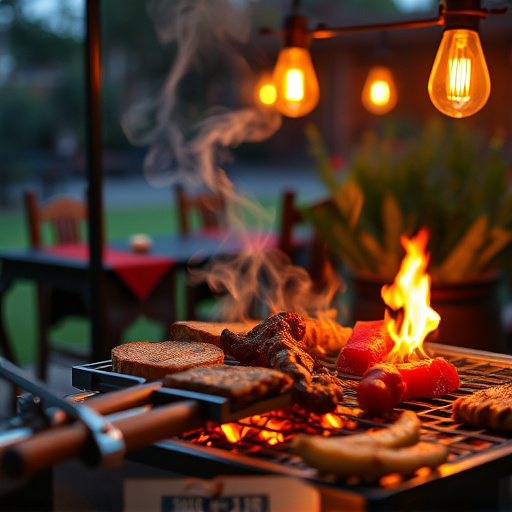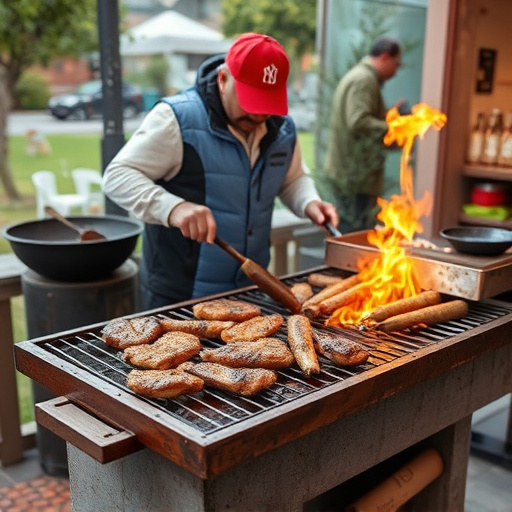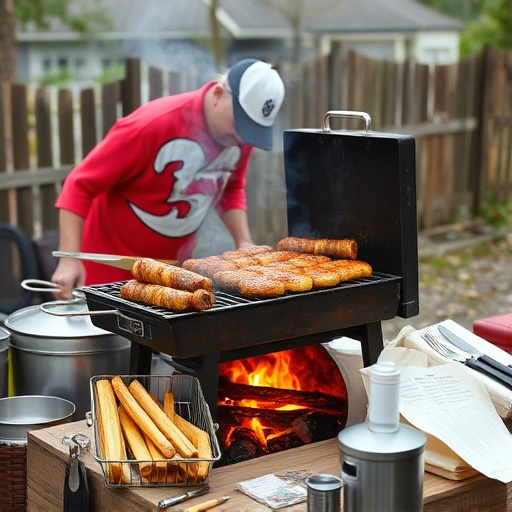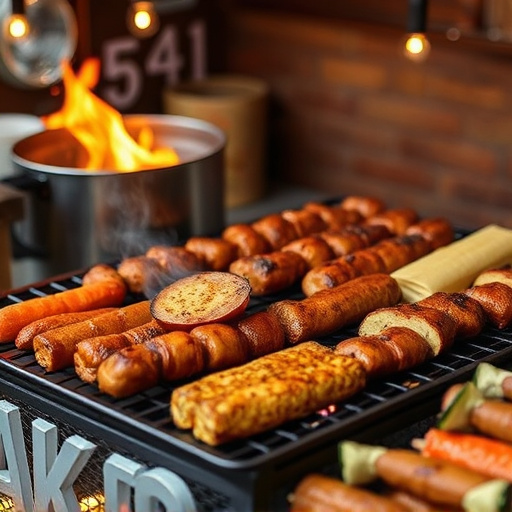Choosing the right cut of ribs for a smoked BBQ ribs recipe is crucial for success. Baby back and St. Louis-style ribs offer ideal meat-to-bone ratios and flavor distribution, while spare ribs require more attention due to their larger size and higher fat content. Understanding the lean-to-fat ratio impacts cooking times; leaner cuts take longer, while fattier ones cook faster. Selecting high-quality, fresh ribs from reputable butchers ensures exceptional smoked BBQ ribs recipe results.
Unleash your inner BBQ maestro with our comprehensive guide to crafting the perfect smoked BBQ ribs! From selecting the ideal cut—whether it’s babybacks, spare ribs, or St. Louis-style—to mastering the art of smoking, every step ensures a mouthwatering experience. Learn about crucial equipment, discover secret techniques for that authentic smoky flavor, and explore diverse wood types to elevate your ribs game. Get ready to impress with our foolproof recipe, guaranteeing tender, juicy ribs every time.
- Choosing the Right Cut for Smoked BBQ Ribs
- – Different cuts of ribs and their unique characteristics
- – Tips on selecting the best quality ribs
Choosing the Right Cut for Smoked BBQ Ribs

When it comes to smoked BBQ ribs recipes, selecting the correct cut is a pivotal step in achieving that perfect, tender, and flavorful result. The most popular options are typically the baby back ribs or the spare rib cuts. Baby backs have less fat and a smaller bone structure, making them easier to manage during the smoking process. This cut also offers a nice balance of meat and bone, ensuring consistent flavor distribution.
On the other hand, spare ribs provide a heartier portion with more marbling and fat, which can contribute to a richer smoke flavor. They may require a bit more attention due to their larger size and higher fat content but are well-loved among BBQ enthusiasts for their juicy and tender texture when prepared correctly. Choosing the right cut is not just about personal preference; it also affects cooking time, overall taste, and the presentation of your final dish.
– Different cuts of ribs and their unique characteristics

When it comes to smoking BBQ ribs, the choice of cut is a pivotal decision that can dramatically impact the final dish. Different cuts offer distinct textures and flavors, catering to various preferences. The most common rib cuts include baby back, spare rib, and St. Louis-style ribs, each with its own unique profile. Baby back ribs, for instance, are known for their tender meat and smaller bone structure, making them a popular choice for those who prefer a more delicate dining experience. In contrast, spare ribs boast a hearty, meaty texture with larger bones, offering a robust flavor that melts in your mouth.
A key factor in achieving perfect smoked BBQ ribs is understanding the lean-to-fat ratio of each cut. Leaner cuts like baby back tend to require longer cooking times to soften the meat, while fattier varieties, such as spare ribs or Memphis-style ribs, can cook faster, resulting in a juicy, succulent finish. Knowing these nuances allows you to tailor your smoking technique and chosen recipe, ensuring every bite of your smoked BBQ ribs recipe is nothing short of mouthwatering perfection.
– Tips on selecting the best quality ribs

When it comes to crafting the ultimate smoked BBQ ribs, starting with the right cut is key. Opt for baby back or St. Louis-style ribs, known for their abundant marbling and meaty sections. Look for ribs with a good balance of meat and bone, ensuring they’re not too thin or overly fatty. The ideal rib should have a deep red color, indicating freshness, and a slight rub of spices on both sides.
Choosing high-quality ribs is an art, and it’s worth seeking out reputable butchers or specialty stores that can guide you in selecting the finest cuts. Remember, the foundation of any exceptional smoked BBQ ribs recipe lies in the quality of its starting ingredient.
